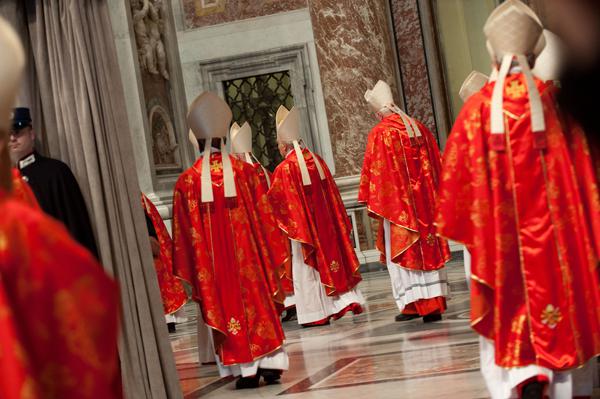|
Are American Cardinals an endangered species?
By David Gibson
(RNS) This week’s funeral rites for Cardinal Francis George of Chicago marks the passing of a kind though straight-talking prelate who was recalled after his death from cancer as a great intellect and a “lion” of a churchman, especially by his many fans on the Catholic right. But it also also feels like the end of an era, as a different style of bishop is slowly emerging in the Pope Francis era, one more in synch with the pontiff’s pastoral style — like Archbishop Blase Cupich, the man Francis chose last fall to succeed George, who was 78 when he died. What may be just as significant, however, in terms of the influence of American Catholicism, is that Cupich does not yet have a “red hat,” so one of the major dioceses of the U.S. church would currently be without a vote if a conclave to elect a new pope were held. Moreover, Cardinal Justin Rigali, another longtime U.S. churchman — and behind-the-scenes architect of the conservative Catholic renaissance in the U.S. — turned 80 this week, which means he loses his right to vote in a papal election. Taken together, these two events reduced the number of American cardinal-electors in the College of Cardinals from 11 to 9 in the space of a week — from just over 9 percent of the 120-member body to 7.5 percent. Also: two more U.S. electors — Cardinal Roger Mahony, retired archbishop of Los Angeles, and Cardinal William Levada, a retired Vatican official — will turn 80 and thereby lose their eligibility next February and a year from this June, respectively. That would take the American bloc to just under 6 percent. (Bishops by custom submit their resignations from office at 75 but cardinals can keep a conclave vote for five more years.) Francis has appointed two batches of new cardinals in his two years in office, the first in February of last year and the second in February of this year, and there were no Americans in either group. If he does nothing, the U.S. bloc in the College of Cardinals would be cut significantly, to 7 or 8, and that’s barring any acts of God, which are always possible when we are talking about men in their 60s and 70s. Now it’s more than likely that Francis will name one or two Americans next February, if he keeps to his past practice, with Cupich in Chicago and Archbishop Jose Gomez in Los Angeles replacing George and Mahony. And many would argue that reducing the representation of the American cardinals would be justice; American Catholics are a big and important church in the U.S. with some 65 million members. But they comprise just 6 percent of the global Catholic population of about 1.2 billion. Moreover, American Catholics, like American culture, has an outsized presence in the world’s cultural and political and financial arenas, and in the Vatican’s viewfinder as well, in some respects. Francis has moved to change the demographics of the College of Cardinals, picking bishops from outlying countries or dioceses on the margins of society and in the church that have not traditionally held sway in Rome. Perhaps he is sending U.S. Catholics a message, or maybe he will send a different message by appointing more American cardinals — but in places that have not usually had them but where the church is growing, like Atlanta or Louisville or someplace along the Mexican border. The migration of American Catholics is South, and their cardinals may follow.
|
.
Any original material on these pages is copyright © BishopAccountability.org 2004. Reproduce freely with attribution.
